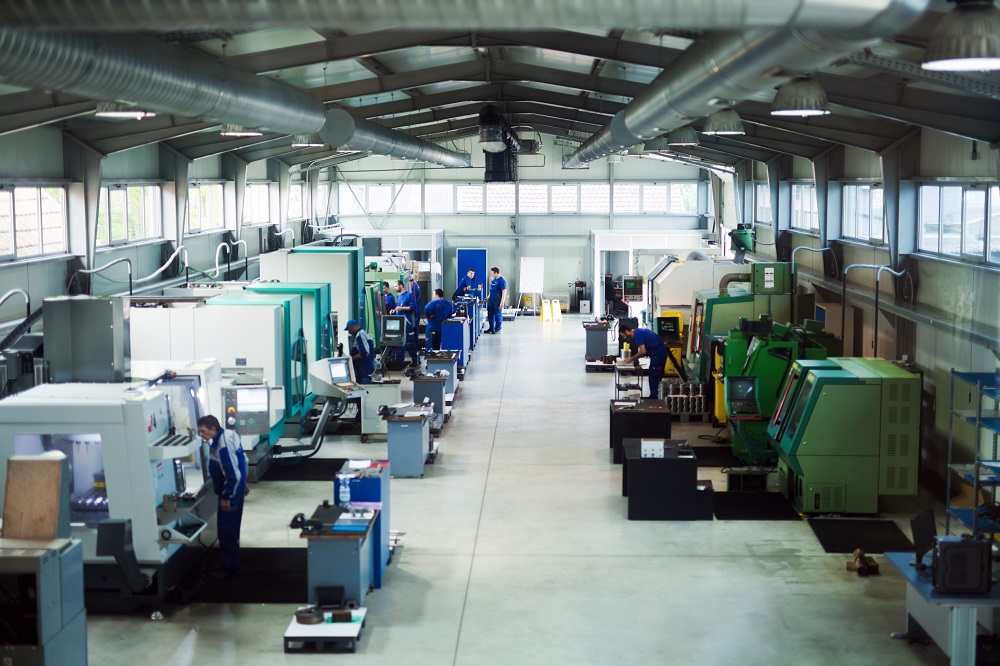Since the onset of COVID-19 in March 2020, the manufacturing sector has been in a state of flux — from surging prices for materials to skilled labor shortages to rampant supply chain issues. Research from the Bureau of Labor Statistics conducted in June 2021 revealed over 826,000 unfilled manufacturing jobs, down only slightly from the record 853,000 job openings posted one month prior in May. Major companies, including John Deere, Carrier Global, and Dover Corporation, cite the labor shortage as one of their top challenges.
Until companies can successfully fill vacant roles, it’s critical for manufacturers to maximize labor efficiency, which refers to how effectively workers accomplish specific tasks when benchmarked against industry standards.
Labor Efficiency = (Actual Hours – Standard Hours) x Standard Rate
Manufacturers are typically paid according to the quality and volume of goods they produce. Their workers, on the other hand, are paid on an hourly basis, which is one of the biggest reasons why labor efficiency poses such a significant impact on an operation’s profits.
Improving labor efficiency involves shortening production times while also increasing the number of total items manufactured in a specific timeframe.
As for one of the most effective ways to cut operating costs? Three words: Proper coolant management, which can also directly affect worker performance.
How Coolant Maintenance Improves Labor Efficiency
Cutting fluid comprises less than 1 percent of a manufacturer’s total operating costs. However, it affects nearly every other item in the budget, including tool life, workpiece quality, machine life, and labor efficiency. That’s why maintaining your coolant can drastically overall cut costs, plus reduce production time and help manufacturers achieve more ambitious goals.
Fewer Top Ups
Cutting fluid functions best at specific concentrations in the sump. However, this ratio of coolant to water can be hard to maintain due to carry off, foam, or contaminants.
TRIM® coolants are formulated to prevent carry off and bacteria growth from the start — and when properly maintained, these benefits are even more pronounced. Plus, less frequent fluid top offs will lead to more time for employees to focus on manufacturing products.
Longer Sump Life
No matter how well shop managers care for their coolant, there is often a limit to its useful life before it requires replacement. Machine shutdowns for cleanouts, and coolant changes are incredibly time-consuming and labor-intensive, so any time your workers are engaged in this type of maintenance, it means they’re getting paid for work that doesn’t directly drive revenue.
One of the best ways to improve labor efficiency is to minimize the need for workers to complete tasks that don’t involve production. When manufacturers regularly follow procedures to keep the coolant clean and functioning optimally, fluids can often last a year or more in machine sumps before needing a machine cleanout. This keeps productivity high for months on end without shutdowns.
Better Working Conditions
When tramp oil is present in cutting fluid, there’s a chance it can burn during operations, creating smoke. In addition to affecting a shop’s air quality, smoke is dangerous for employee health. Keeping coolant clean is one of the best ways to improve the shop environment and maintain employee morale, as well as ensure employees remain healthy and on the job.
Coolant Maintenance Is the Basis for Inspired Workers
The Harvard Business Review (HBR) created a Pyramid of Employee Needs, categorizing the environmental and engagement qualities necessary for creating a high-performance workforce — and operating a safe work environment, such as a shop free of smoke and bacterial odors, is listed as one of the most basic needs. HBR’s research also found that fulfilling this one requirement can increase productivity by more than 40 percent.
Proper coolant maintenance provides the foundation to creating a successful production environment, even helping employees derive meaning from their work. Plus, workers who function at full capacity will achieve higher rates of productivity than those who are unsatisfied at work.
Focusing on these solutions during today’s labor shortage will help manufacturers achieve greater productivity than ever before and even help retain current employees. To learn more about TRIM cutting fluids and how they can impact your labor efficiency, productivity, and operating costs, call +1 800-537-3365 or email us at [email protected].

